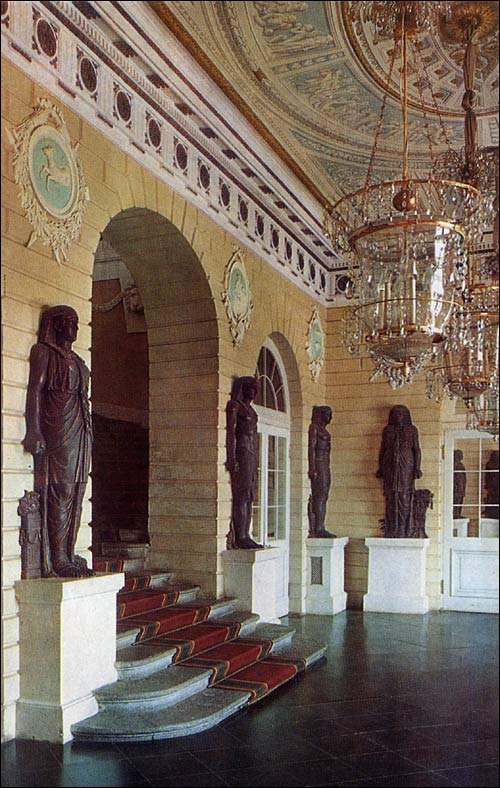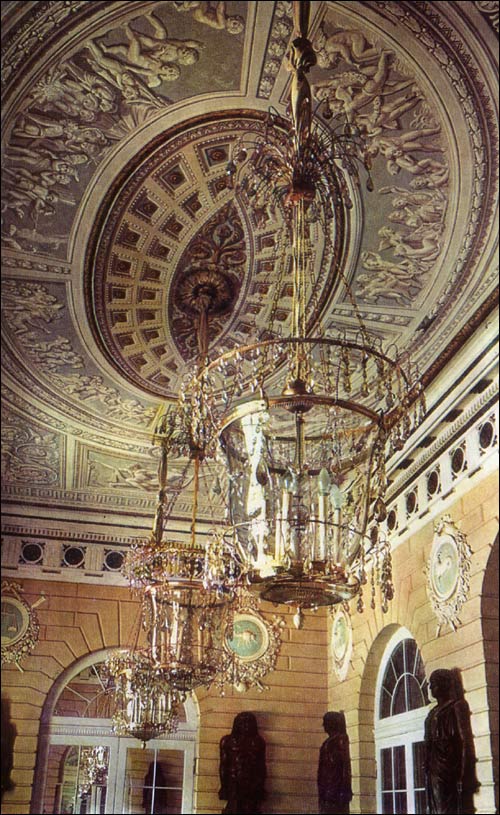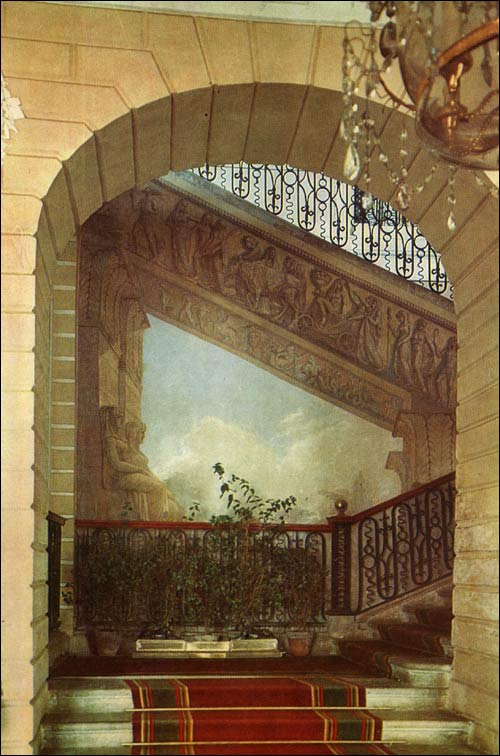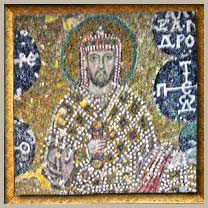Bob Atchison's guide to rare and antique roses and where to buy them with special focus on David Austin Roses and Antique Rose Emporium

|


The Lower or Egyptian Vestibule is one of the five rooms decorated in 1786 by Cameron. Its walls are rusticated like the facade of the building, tinted the colour of Pudost limestone and capped by a Doric cornice with triglyphs. This severely classical interior is enlivened by medallions bearing the signs of the zodiac framed in "rural trophies", and by bronze-coloured plaster statues sculptured by Ivan Prokofyev, and emblematic of the twelve months of the year. Actually rather small, the Egyptian Vestibule is made to appear spacious by the use of mirrors set into the doors - a device typical of eighteenth-century palace architecture.
The mouldings of the frieze, partly painted in imitation of bronze, gradually lead the eye upwards, to the ceiling fresco done in grisaille, originally the work of Giovanni Scotti. The fresco consists of four scenes of cupids engaged in occupations symbolizing the four seasons. The signs of the zodiac, the statues and the ceiling fresco were supposed to emphasize that this was a summer residence, a country retreat. Architecture, sculptures and murals form here an organic whole. The original statuary perished in the fire of 1803, and a set of new sculptures were made in the Egyptian style from the sketches of Voronikhin. These figures, painted the colour of patinated bronze, seem to step out of the wall. At their feet are the attributes of the months, illustrating the activities and pastimes proper to each. The figures - dark, austere and immobile - create, together with the dark granite of the floor, an atmosphere of solemnity, cool and repose. The lanterns in the Vestibule, embellished with festoons of large drops of faceted crystal, resemble inverted bells. An arch connects the Egyptian Vestibule with the Main Staircase, whose walls have retained Giovanni Scotti's painting of a ramp which leads down to a garden, with two "Egyptian" sculptures 01 seated women on the left. It provides a link between the Egyptian motifs of the Lower Vestibule and the classical decor of the staircase and the Upper Vestibule, and connects the palace Interior with the park outside. A single flight of steps of modest proportions sweeps in a gentle curve to the Upper or State Vestibule, constructed after Cameron's design and decorated in 1789. This vestibule is separated from the staircase by a wide arch supported by two telamones, executed, possibly, by Ivan Prokofyev. The powerful physique and vigorous postures of the two figures have been rendered by the sculptor in a truly masterly manner.    |

|





